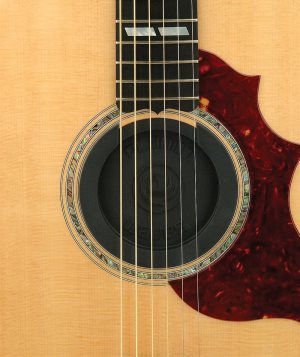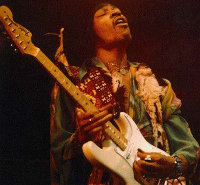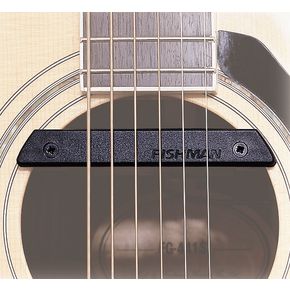Advice on how to control feedback when you play an acoustic guitar through an amplifier.
Question:
I read your article on controlling feedback in a hollowbody electric guitar. What advice do you have for an acoustic guitar with a pickup? I’ve tried those rubber soundhole covers, but it didn’t help much. I’m playing through a Peavey amp, and I recently added a Boss GT-3, but that didn’t help much either.
Answer:
Controlling feedback in an acoustic is a bit more difficult, as it’s generally desirable to keep a good acoustic sound when not plugged in, and filling any guitar with foam, whether it’s an acoustic or thinline hollowbody electric, really kills the acoustic tone and volume when played unamplified.
The rubber soundhole cover is a good try, and usually it does some good. You didn’t mention which Peavey amp you use, but there are a couple things that could be a factor about the amp.
If it’s a practice size amp with a small speaker, like a 6″, 8″, or even 10″, the highs are accented, thereby making you more feedback prone. Using an amp with one or more 12″ speakers, or even two 10″ speakers, will give you a better chance at less feedback.
Also, with any size amp, the EQ setting can be very important, and this goes for the amp settings, and the guitar EQ settings as well. Be sure the treble isn’t too high, like not over halfway up, or you’ll get the high screech. Midrange and bass up too high will give you the howling type of feedback, and may actually cause one string or fretted note to take off in a Hendrix type feedback fashion.
Start with all of your EQ settings at mid-level. This should give you a pretty flat, uncolored (and maybe uninteresting) sound. Slowly add a bit more bass and a wee bit high end for sparkle, and see if you can reach your desired volume level that way, taking care to not face the amplifier with your guitar. The best position is to have your back to the amp, and slightly to your side.
One more thing, does your guitar have a “notch” control? Many guitars have one, but most players don’t really know how it works. It’a a type of EQ that allows you to dial out the offending frequency. To set it, you need to purposely let your guitar feedback in the way it usually does, and while it’s doing so, turn the notch control slowly until you find the spot where the feedback disappears. At that point, you may even be to turn up louder without feedback occurring.
Related Items:
Roundup of the best Acoustic Guitar Pickups
We present the best brands in Acoustic Guitars as well as the top models across a wide price range from beginner instruments though to professional ones.





i have a framus modle number amatour 511 ex…..serial number 36734.tested by miller 69e
i am trtying to find out how much its worth